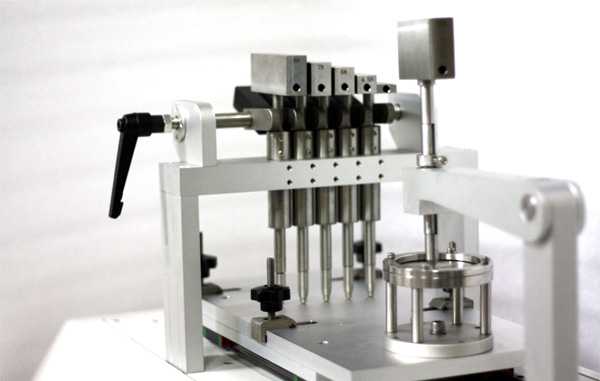Operation of Mulfunctional Scratch Tester

I. Brief Introduction
The multifunctional scratch tester is a device that integrates multiple testing functions into one unit. It is capable of simulating scratch behaviors under different environments and providing comprehensive and accurate evaluations of a material's scratch resistance. This equipment is widely used in various fields such as materials science, coating technology, automotive manufacturing, home decoration, and many others, becoming an indispensable testing tool for enterprises and scientific research institutions.
II. Standards
GB/T 2918, GB/T 6151, GB/T 8424.3, PV3952, BMW GS97034-2, BMW GS97034-9, GMN 3943-2003,FLTM BN 108-13,STD1024-3113,GMW 14698-A,GMW 14688

III. Characteristics
Multifunctional scratch testers possess several characteristics that enable them to more accurately assess a material's scratch resistance:
- High Precision: Utilizing advanced scratch technology and precise control systems, it can accurately control the depth, speed, and force of scratches, ensuring the accuracy and reliability of test results.
- Multifunctionality: Besides the basic scratch testing function, it also features additional functions such as wear resistance testing, hardness testing, adhesion testing, etc., enriching the application scenarios of the tester.
- Automation: Equipped with high-definition cameras and image analysis software, it can capture the scratch process in real-time and perform precise measurements and analyses of scratch morphology, depth, width, and other parameters, providing detailed test reports.
- Easy Operation: The operation interface is clear and intuitive, allowing users to complete tests by simply following prompts. Meanwhile, the maintenance of the tester is relatively simple, requiring only regular cleaning and calibration to maintain its good working condition.
IV. Operation
The operation of a multifunctional scratch tester typically includes the following steps:
Preparation Stage:
- Check if the equipment is in good working condition and ensure that all components and accessories are complete and undamaged.
- Select the appropriate scratch head (e.g., metal scratch head, plastic scratch head) and pressure device (e.g., weights and weight support rod) according to the testing requirements.
- Fix the test sample onto the sample clamping device, ensuring it is flat and securely fastened.
Parameter Setting:
- Set the scratch length, speed, force, and other parameters according to testing standards or customer requirements.
- Configure the test process, including the number of scratches, direction, interval, etc.
Starting the Test:
- Start the equipment to begin the scratch test. During the test, observe the scratch morphology and depth in real-time and record relevant data.
- If multiple tests are required, repeat the above steps until all testing tasks are completed.
Data Analysis:
- After the test is completed, use image analysis software to perform precise measurements and analyses of scratch morphology, depth, width, and other parameters.
- Evaluate the material's scratch resistance based on the test results and write a test report.
Maintenance:
- After testing, promptly clean the equipment surface and interior to remove residual scratches and debris.
- Regularly inspect if all functions and components of the equipment are operating normally, and repair or replace any abnormalities in a timely manner.
- Store the equipment in a dry, ventilated environment free of corrosive gases to extend its service life.
Please note that specific operation steps may vary depending on the equipment model and testing requirements. Therefore, in actual operation, it is recommended to refer to the equipment's operation manual or consult professional technicians for more accurate guidance.
Qinsun Instruments Co., LTD, established in 2012, focuses on the research and development, design, and production of textile testing instruments. It provides textile testing instruments and services to academic research units and testing institutions. Qinsun is currently one of the most competitive and R&D-capable manufacturers of textile testing instruments in China, with an R&D team composed of experienced engineers. We are dedicated to serving our customers with all our hearts and striving to promote technological innovation in textile testing instruments.
2025-01-10 10:06

